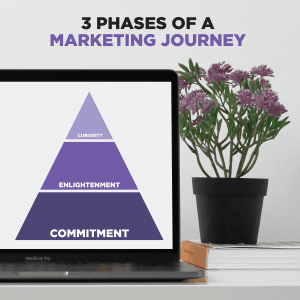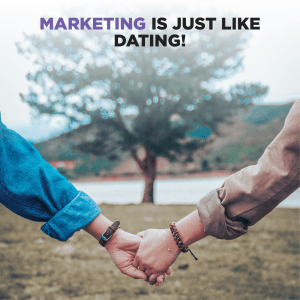
Digital Marketing 101: Defining ROI
There’s not a lot to complain about when you put $100 on Facebook Ads, and $5000 comes out in online sales – a good 5000% ROI.
Now, to address the elephant in the room: ROI stands for “Return on Investment”, and for you geeks you there, here’s a scientific explanation.
It sounds unreal on paper, and you’ve probably seen schemes like this advertised every second day on social media by marketing gurus, but we’d probably be the first marketing agency to tell you – don’t get too excited just yet.
Many people start out in digital marketing make investments without a realistic view of the kind of results to expect. Many assume that the ads they run, videos they put out, or the blogs they write will, and should, immediately produce sales on the other end.
Like all things in business, a 500% marketing ROI takes a ridiculous amount of work to achieve.
This blinded view is a common issue that needs to be addressed. Because of statements like this:
“People will flock to my amazing product after seeing this beautiful video”
“I paid a graphic designer $5000 for this beautiful landing page, so it should convert like crazy.”
“I watched an online course on how to run Facebook ads, the guru says I can do 6 figures in 2 weeks”
It’s fair to say that most of these business owners will walk away burnt and disappointed by the lack of “results”. Some choose to completely walk away from online marketing, claiming “it just doesn’t work”.
That leaves the enormous window of opportunity for competitors to eventually win with online marketing, if only they had kept a little perspective.
Back to the Yellow Pages they go.
Sounds familiar? You’re certainly not alone. As an agency, it took us years to figure out how to systematically set our expectations on marketing results – so that we can at least sleep at night.
The big part of this realisation is to discern what metrics we should be measuring according to the marketing journey; in between content, engagement, mini-conversions to eventually cashing out in sales.
In his latest podcast episode and webinar, Donald Miller talks about the 3 phases of a marketing journey – Curiosity, Enlightenment, Commitment.
In layman terms, an average consumer needs to see the same offer 7-10 times before making a buying decision, therefore our job as marketers is to strategically and systematically funnel the consumer from product curiosity, into pulling out credit cards.
Sales don’t just happen after merely seeing a Facebook Ad with pretty graphics and cute copy. Love at first sight rarely works in 2018, things don’t just go viral.
To put things in perspective, what would be your “conversion rate” if you asked a girl to marry you at a cocktail party without even going on a first date? A genuine relationship needs to happen first, and it’s exactly the same with digital marketing.
Let’s explore these 3 key things, and what to measure in each phase:
Curiosity: Traffic
When you see that cute girl/guy at a party from a distance, you are left with a feeling of butterflies and an itch to know more about the person.
Long-lasting relationships always begin with a good first impressions, leading to someone being curious in exploring further.
Back to this girl: imagine she so flawless, every man in the room had their eyes peeled in her direction, gazing at her beauty and perfection. She certainly has attracted a lot of eyeballs.
In digital marketing, that’s called web traffic. In social media terms, viewers click on an enticing ad (image or video) which directs to your website, curious to know more about you, and a possible invitation to connect.
Nice pickup line, Bob.
And the stats don’t lie – web traffic analysis can tell you a lot about how you are attracting people’s attention for the first time, where are they from, and how long they intend to continue flirting with you.
Let’s get a bit technical:
Say you’ve written a blog on your website, and you’re promoting this on Facebook for $50. Currently, Facebook gives you approximately 1000 impressions for every $10-12 spent. That means about 5000 targeted people of your choice are going to see your blog image appearing on their newsfeeds, inviting them to click and land on your blog.
Aim for an industry standard 3% “clickthrough rate”, here’s 150 targeted prospects landing on your website at $0.33 per head.
The better you can spark their curiosity with problem-solving content, the better your clickthroughs.
If you are interested in the how to build amazing, click-worthy content, check out this storytelling framework – simply the best on planet earth.
Enlightenment: Engagement
Now you’ve got the girl’s attention, let’s keep her sparked with joy so she agrees on a second date with you. Remember – you’ve just got 7-10 more dates to go before you can show her the ring.
Engagement, put simply, is how well you can flirt with your web traffic.
At this point you should be measuring how much time people spend viewing your content, browsing through your website, or clicking on things.
These metrics will indicate your customers’ level of interest with your business, and how deep they would allow you to talk them into a purchasing decision.
This way you’ll be able to scientifically measure if your product is truly attractive. And being attractive means your product is solving a burning problem that your customers have, and you’re being effective in repeatedly communicating that message.
So you’ve made a good first impression, gone on multiple dates to keep them engaged and interested, let’s pop the question – in a slightly different way.
Commitment: Conversion (not sales)
Many people confuse this last phase of the marketing journey with sales – not yet. And that’s where most people miss the mark and end up being disappointed.
“Patience”, says Gary Vaynerchuk.
In order to get people to make the ultimate commitment to buy from you, especially if you’re selling a high-price product, you need to first vet those willing buyers with “mini-conversions”, to filter out those who are truly ready to make a purchasing decision.
Mini-conversions are usually free digital assets, or discounted products, in exchange of their contact details or a small revenue. It has to be an extremely valuable customer experience, presented in a nothing-to-lose scenario.
Here are some examples:
– Free eBook, video series
– Free webinar or masterclass
– Free product sample + shipping (customer to pay)
– Limited free or discounted consultation
– Discounted products
Once you’ve got their contact details and a series of mini-commitments, you can go all out with your “buy me” messages.
This is how you chisel out the real buyers who can’t wait for you to take their money. Now you’re on track for your 500% ROI. But don’t stop here. Be diligent to repeat the same process, forever – Curiosity, Enlightenment, Commitment.
Don’t confuse marketing with sales
In conclusion, it is also important for business owners and marketers to understand the difference between marketing and sales, as Andrew Banks from Shark Tank Australia puts it.
You can have the most robust marketing strategies, copywriting and sales funnel automation like a well-oiled machine; and that machine, at its best, will produce you good quality prospects, ready for a streamlined sales process to convert.
That means if you can’t sell, or the product is ultimately bad, all the marketing effort will still be a waste of time and money.
Again, consumers need to see the same offer 7-10 times before they make a buying decision. Whether you do this through social media, Google Adwords, email marketing, retargeting, or Yellow Pages – it’s about getting in front of your prospects at all times, providing avenues to spark curiosity, provide enlightenment and ask for a commitment.
You’re smart enough to know relationships takes a lot of time and effort to build, and that’s the name of the game in marketing. Many gurus preach “one-night stand” marketing, and you know it’s far from sustainable.
If a business keeps offering a 40% discount on any given week, you will immediate question the legitimacy of their products and would only cap your relationship with them at the discount offer.
If you’d like to have a conversation on how your business can get into this routine of curiosity, enlightenment, commitment in the digital world, book a free 30 min discovery call with us. So we can design a custom plan for you to enter into your customers’ marketing journey, all for you to sell more and achieve business success.

